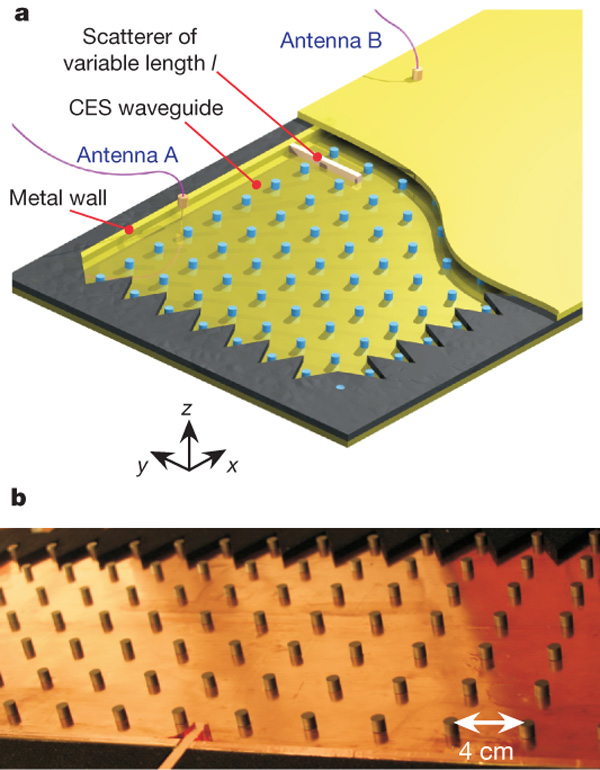 Research funded in part by the MIT MRSEC has
Research funded in part by the MIT MRSEC has
led to a discovery of one-way photonic behavior. A team made up of MIT
physicists Zheng Wang, research scientist in MIT's Research Laboratory
of Electronics; recent MIT PhD recipient Yidong Chong; Professor John
Joannopoulos; and Professor Marin Soljacic have developed and
experimentally tested photonic crystals that restrict light to travel
in only one direction without back-scattering, even in the presence of
large disorders.
In experiments, a microwave light beam is sent through
the edge (a waveguide) of an array of small ceramic rods placed under
an external magnetic field. Rather than bounce back or reflect, the
light is able to move around obstacles and defects in its path without
scattering.
This concept could be used to create
one-way conduits in lightwave circuits, increasing their capacity and
efficiency. Potential practical applications include optical
information storage. This research also opens up a wide range of
possibilities of using photonic structures to study topological orders
that was so far only observed in electronic systems. This work was
funded by the Army Research Office (Institute for Soldier
Nanotechnologies), and the National Science Foundation (MRSEC program).